Grow bananas in one year? Sounds like a tropical dream, right? Well, grab your gardening gloves because I’m about to show you how to turn that dream into a delicious reality, even if you don’t live in the tropics! For centuries, bananas have been a symbol of abundance and prosperity in many cultures, from their sacred status in some Southeast Asian traditions to their vital role in the diets of communities across the globe. But what if I told you that you don’t need a sprawling plantation to enjoy the sweet taste of homegrown bananas?
Many people believe that growing bananas is an impossible feat without a tropical climate and years of patience. That’s where this DIY guide comes in! I’m going to share some clever tricks and hacks that will significantly speed up the process, allowing you to grow bananas in one year. Imagine the satisfaction of harvesting your own bananas, knowing you nurtured them from tiny shoots to fruit-bearing plants. Not only will you have a unique and rewarding gardening experience, but you’ll also impress your friends and family with your green thumb skills. So, let’s dive in and unlock the secrets to growing bananas faster than you ever thought possible!
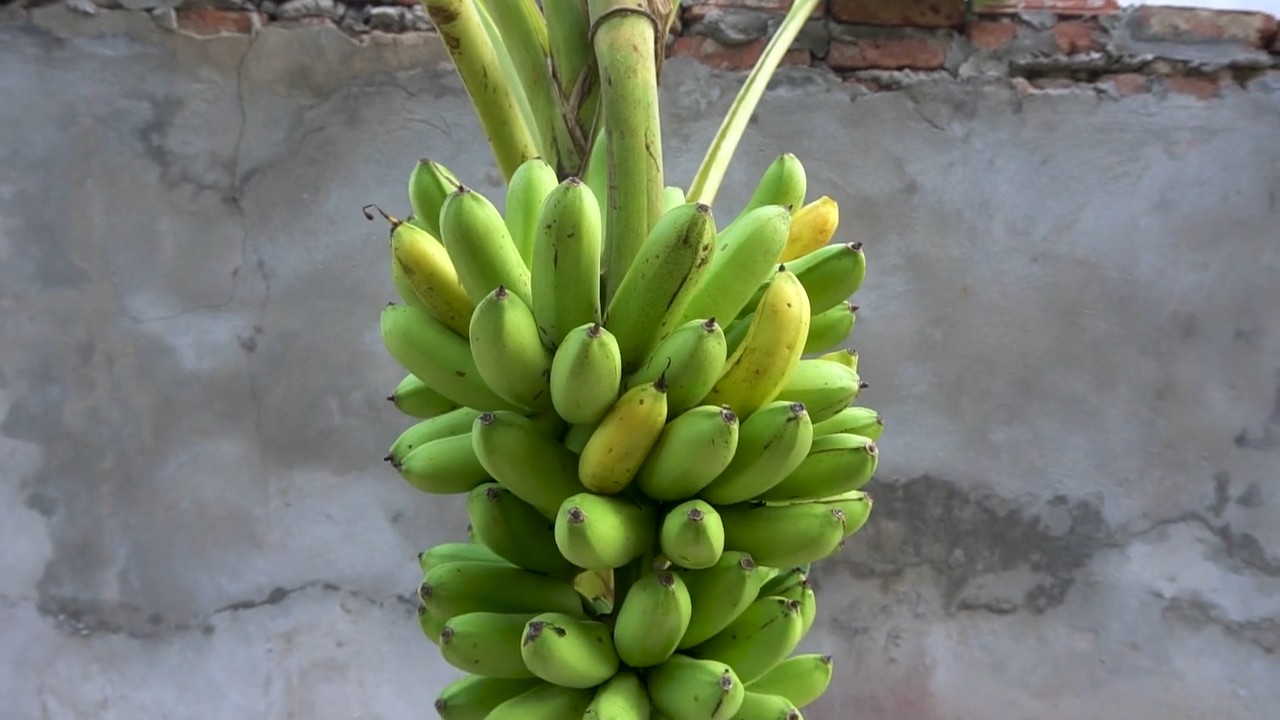
Bananen selbst anbauen: Dein DIY-Guide für eine schnelle Ernte!
Hey Leute! Habt ihr euch jemals gefragt, ob es möglich ist, Bananen in nur einem Jahr zu züchten? Die Antwort ist: Ja, absolut! Es braucht zwar etwas Planung und die richtigen Bedingungen, aber mit diesem DIY-Guide zeige ich euch, wie ihr schon bald eure eigenen, köstlichen Bananen ernten könnt. Lasst uns loslegen!
Was du brauchst: Die richtige Vorbereitung ist alles!
Bevor wir mit dem Pflanzen beginnen, müssen wir sicherstellen, dass wir alles Nötige zur Hand haben. Hier ist eine Liste der Materialien und Werkzeuge, die wir benötigen:
* Bananenpflanze: Wähle eine junge Bananenpflanze (auch “Pflanzgut” genannt) einer schnell wachsenden Sorte. Cavendish ist eine beliebte Wahl, aber es gibt auch andere, die sich gut für den Anbau im Topf oder im Garten eignen. Achte darauf, dass die Pflanze gesund aussieht und keine Anzeichen von Krankheiten oder Schädlingen aufweist.
* Großer Topf (optional): Wenn du in einer Region mit kalten Wintern lebst, ist ein großer Topf (mindestens 50 Liter) ideal, damit du die Pflanze im Winter ins Haus holen kannst.
* Hochwertige Blumenerde: Bananenpflanzen lieben nährstoffreiche, gut durchlässige Erde. Eine Mischung aus Blumenerde, Kompost und etwas Sand ist perfekt.
* Kompost oder organischer Dünger: Bananen sind Starkzehrer und brauchen regelmäßige Düngergaben.
* Gießkanne oder Gartenschlauch: Für die regelmäßige Bewässerung.
* Mulch (optional): Mulch hilft, die Feuchtigkeit im Boden zu halten und Unkraut zu unterdrücken.
* Sonniger Standort: Bananen brauchen viel Sonne, mindestens 6-8 Stunden pro Tag.
* Scheren oder Messer: Zum Entfernen von abgestorbenen Blättern.
* Pflanzstab (optional): Um die Pflanze bei starkem Wind zu stützen.
* Handschuhe: Zum Schutz deiner Hände.
Schritt-für-Schritt-Anleitung: So pflanzt du deine Bananenpflanze richtig!
Jetzt, wo wir alles vorbereitet haben, können wir mit dem Pflanzen beginnen. Hier ist eine detaillierte Anleitung, die dir hilft:
1. Den richtigen Standort wählen: Bananenpflanzen lieben die Sonne! Suche einen Platz in deinem Garten oder auf deinem Balkon, der mindestens 6-8 Stunden Sonnenlicht pro Tag bekommt. Wenn du in einer windigen Gegend wohnst, wähle einen geschützten Standort, da die großen Blätter der Bananenpflanze leicht beschädigt werden können.
2. Den Topf vorbereiten (optional): Wenn du deine Bananenpflanze in einem Topf anbaust, stelle sicher, dass der Topf ausreichend groß ist (mindestens 50 Liter) und über Drainagelöcher verfügt, damit überschüssiges Wasser ablaufen kann. Fülle den Topf mit einer Schicht Kies oder Blähton, um die Drainage zu verbessern.
3. Die Pflanze einsetzen: Fülle den Topf oder das Pflanzloch mit der vorbereiteten Blumenerde. Grabe ein Loch, das etwas größer ist als der Wurzelballen der Bananenpflanze. Setze die Pflanze vorsichtig in das Loch und achte darauf, dass der Wurzelballen nicht beschädigt wird. Fülle das Loch mit Erde auf und drücke sie leicht an.
4. Gießen: Gieße die Bananenpflanze nach dem Einpflanzen gründlich. Die Erde sollte feucht, aber nicht nass sein.
5. Mulchen (optional): Trage eine Schicht Mulch um die Bananenpflanze auf, um die Feuchtigkeit im Boden zu halten und Unkraut zu unterdrücken.
Die richtige Pflege: So bringst du deine Bananenpflanze zum Blühen!
Die richtige Pflege ist entscheidend für eine erfolgreiche Bananenernte. Hier sind einige Tipps, die du beachten solltest:
1. Bewässerung: Bananenpflanzen brauchen viel Wasser, besonders während der Wachstumsperiode. Gieße die Pflanze regelmäßig, besonders an heißen Tagen. Die Erde sollte immer feucht, aber nicht nass sein. Vermeide Staunässe, da dies zu Wurzelfäule führen kann. Ich gieße meine Pflanze in der Regel alle 2-3 Tage, je nach Wetterlage.
2. Düngung: Bananen sind Starkzehrer und brauchen regelmäßige Düngergaben. Dünge die Pflanze alle 2-3 Wochen mit einem organischen Dünger oder Kompost. Du kannst auch einen speziellen Bananendünger verwenden, der alle wichtigen Nährstoffe enthält. Achte darauf, die Anweisungen auf der Verpackung zu befolgen.
3. Sonnenlicht: Stelle sicher, dass deine Bananenpflanze ausreichend Sonnenlicht bekommt. Mindestens 6-8 Stunden pro Tag sind ideal. Wenn die Pflanze nicht genügend Sonnenlicht bekommt, werden die Blätter blass und das Wachstum verlangsamt sich.
4. Schutz vor Wind: Die großen Blätter der Bananenpflanze sind anfällig für Windbruch. Schütze die Pflanze vor starkem Wind, indem du sie an einem geschützten Standort pflanzt oder sie mit einem Pflanzstab stützt.
5. Schutz vor Kälte: Bananenpflanzen sind frostempfindlich. Wenn du in einer Region mit kalten Wintern lebst, musst du die Pflanze im Winter ins Haus holen oder sie mit Vlies abdecken. Die ideale Temperatur für Bananenpflanzen liegt zwischen 20°C und 30°C.
6. Beschneiden: Entferne regelmäßig abgestorbene oder beschädigte Blätter, um die Pflanze gesund zu halten. Du kannst auch die “Ableger” (kleine Bananenpflanzen, die aus dem Boden wachsen) entfernen, um die Energie der Mutterpflanze auf die Fruchtbildung zu konzentrieren.
Die Blüte und Fruchtbildung: Der Lohn deiner Mühe!
Nach etwa 9-12 Monaten, je nach Sorte und Wachstumsbedingungen, sollte deine Bananenpflanze blühen. Die Blüte ist ein spektakuläres Ereignis! Aus der Mitte der Pflanze wächst ein großer, purpurroter Blütenstand, der sich langsam öffnet und die Bananenblüten freigibt.
1. Die Bananen entwickeln sich: Nach der Blüte entwickeln sich die Bananen. Zuerst sind sie klein und grün, aber mit der Zeit werden sie größer und gelber. Es dauert etwa 3-6 Monate, bis die Bananen reif sind.
2. Erntezeit: Die Bananen sind reif, wenn sie ihre grüne Farbe verloren haben und gelb geworden sind. Du kannst die gesamte Staude abschneiden, wenn die ersten Bananen anfangen, gelb zu werden. Hänge die Staude an einem kühlen, dunklen Ort auf, damit die Bananen nachreifen können.
3. Genießen: Jetzt kannst du deine eigenen, selbst angebauten Bananen genießen! Sie schmecken viel besser als die Bananen aus dem Supermarkt, versprochen!
Häufige Probleme und Lösungen: Was tun, wenn etwas schief geht?
Auch beim Bananenanbau können Probleme auftreten. Hier sind einige häufige Probleme und wie du sie lösen kannst:
* Gelbe Blätter: Gelbe Blätter können ein Zeichen für Überwässerung, Unterdüngung oder Nährstoffmangel sein. Überprüfe die Bewässerung und dünge die Pflanze regelmäßig.
* Braune Blätter: Braune Blätter können durch zu viel Sonne, zu wenig Wasser oder Schädlinge verursacht werden. Schütze die Pflanze vor direkter Sonneneinstrahlung und gieße sie regelmäßig.
* Schädlinge: Bananenpflanzen können von Schädlingen wie Blattläusen, Spinnmilben oder Wollläusen befallen werden. Bekämpfe die Schädlinge mit einem biologischen Insektizid oder durch Abwischen der Blätter mit einem feuchten Tuch.
* Wurzelfäule: Wurzelfäule wird durch Staunässe verursacht. Stelle sicher, dass der Topf über Drainagelöcher verfügt und die Erde gut durchlässig ist.
Zusätzliche Tipps für eine erfolgreiche Ernte: Meine persönlichen Tricks!
Hier sind noch ein paar zusätzliche Tipps, die dir helfen können, deine Bananenernte zu maximieren:
* Verwende Regenwasser: Bananenpflanzen lieben Regenwasser. Sammle Regenwasser in einem Behälter und verwende es zum Gießen deiner Pflanze.
* S
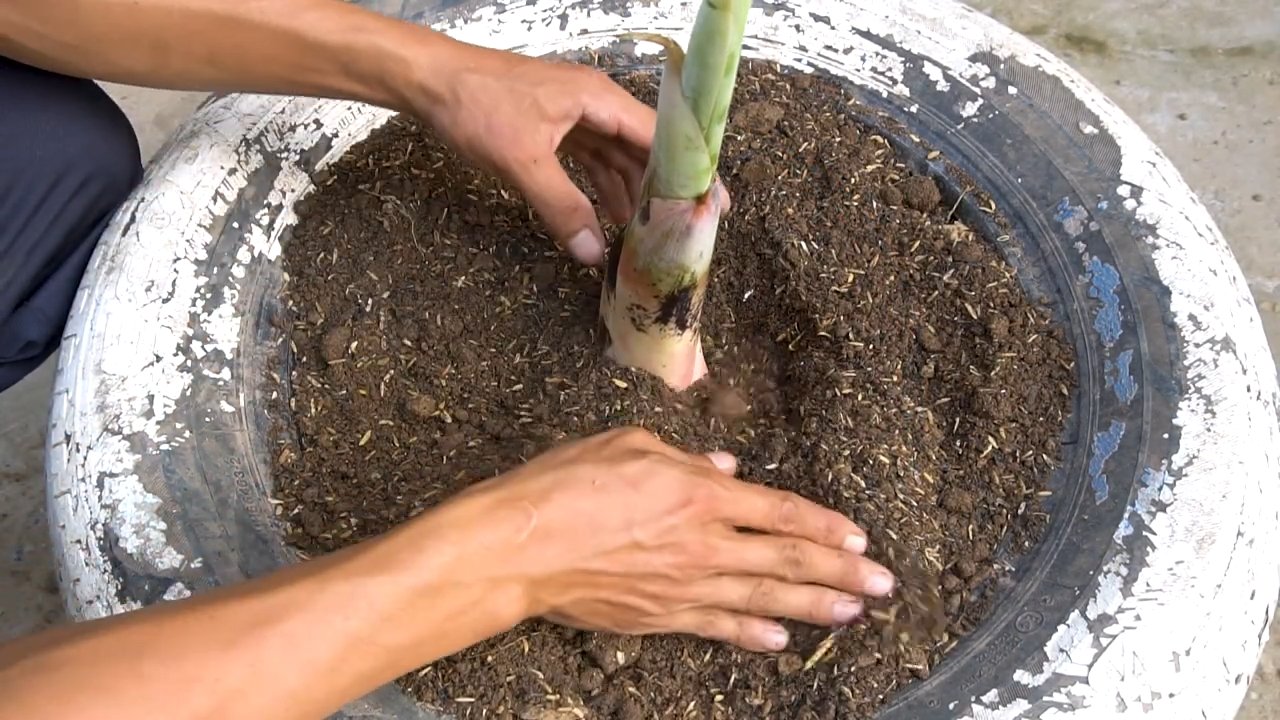
Conclusion
So, there you have it! Growing bananas in one year might seem like an impossible feat, reserved for tropical climates and expert gardeners. But with this DIY trick, you’re armed with the knowledge and techniques to significantly accelerate the process, bringing the taste of the tropics to your own backyard (or even your living room!). This isn’t just about growing a plant; it’s about experiencing the satisfaction of nurturing life, witnessing the miracle of growth, and ultimately, enjoying the fruits (literally!) of your labor.
This method, focusing on creating the ideal microclimate and providing the necessary nutrients, drastically improves your chances of harvesting delicious, homegrown bananas within a single year. Think of the possibilities! Fresh banana smoothies, homemade banana bread, or simply enjoying a perfectly ripe banana picked straight from your own plant. The flavor difference between store-bought and homegrown is truly remarkable.
But don’t stop there! Experiment with different banana varieties. While the Cavendish is a popular choice, consider trying dwarf varieties like the ‘Dwarf Cavendish’ or ‘Rajapuri’ for container gardening. You can also adjust the nutrient mix based on your soil conditions. Some gardeners swear by adding coffee grounds to the soil for an extra boost of nitrogen, while others prefer using banana peels as a natural fertilizer. The key is to observe your plant closely and adjust your approach as needed.
This DIY banana growing trick is a game-changer for anyone who loves fresh produce and enjoys a rewarding gardening experience. It’s a testament to the power of ingenuity and a reminder that with the right knowledge and a little effort, you can achieve seemingly impossible goals.
We urge you to give this method a try. Don’t be intimidated by the prospect of growing bananas; this guide breaks down the process into manageable steps. And most importantly, share your experience with us! We’d love to hear about your successes, challenges, and any variations you’ve tried. Post pictures of your banana plants, share your tips, and let’s create a community of banana-growing enthusiasts. Together, we can unlock the secrets to growing delicious, homegrown bananas, no matter where we live. So, grab your gardening gloves, prepare your soil, and get ready to embark on a banana-growing adventure! You might just surprise yourself with what you can achieve.
Frequently Asked Questions (FAQ)
Q: What type of banana plant should I use for this DIY trick?
A: While the Cavendish banana is a widely available and popular choice, we recommend considering dwarf varieties like the ‘Dwarf Cavendish’ or ‘Rajapuri,’ especially if you plan on growing your banana plant in a container. These varieties are naturally smaller, making them better suited for indoor or limited-space gardening. However, the principles of this DIY trick apply to most banana varieties. Research the specific needs of your chosen variety for optimal results. Remember to choose a healthy, disease-free plant from a reputable nursery.
Q: What kind of soil is best for growing bananas?
A: Bananas thrive in well-draining, fertile soil that is rich in organic matter. A slightly acidic to neutral pH (between 6.0 and 7.0) is ideal. A good soil mix would include a combination of potting soil, compost, and perlite or vermiculite for drainage. Avoid heavy clay soils, as they can retain too much water and lead to root rot. You can amend your existing soil with organic matter to improve its drainage and fertility. Consider conducting a soil test to determine its pH and nutrient levels, and adjust accordingly.
Q: How much sunlight do banana plants need?
A: Banana plants are sun-loving plants and require at least 6-8 hours of direct sunlight per day to thrive. If you’re growing your banana plant indoors, place it near a south-facing window where it can receive ample sunlight. You may also need to supplement with artificial grow lights, especially during the winter months. Insufficient sunlight can lead to stunted growth and reduced fruit production. Rotate your plant regularly to ensure even exposure to sunlight.
Q: How often should I water my banana plant?
A: Banana plants need consistent moisture, but it’s crucial to avoid overwatering. Water deeply when the top inch of soil feels dry to the touch. The frequency of watering will depend on factors such as the size of the pot, the climate, and the time of year. During the growing season (spring and summer), you may need to water more frequently than during the dormant season (fall and winter). Ensure that your pot has adequate drainage holes to prevent waterlogging.
Q: What kind of fertilizer should I use for my banana plant?
A: Banana plants are heavy feeders and require regular fertilization to support their rapid growth and fruit production. Use a balanced fertilizer with a higher potassium content, such as a 10-10-20 or 8-10-10 formula. Fertilize every 2-3 weeks during the growing season. You can also supplement with organic fertilizers such as compost tea or fish emulsion. Avoid over-fertilizing, as this can damage the roots. Always follow the instructions on the fertilizer label.
Q: How do I protect my banana plant from frost?
A: Banana plants are sensitive to frost and can be damaged or killed by freezing temperatures. If you live in an area with cold winters, you’ll need to take steps to protect your banana plant from frost. If your plant is in a container, you can move it indoors to a warm, sunny location. If your plant is planted in the ground, you can wrap the trunk with burlap or blankets to insulate it from the cold. You can also mulch heavily around the base of the plant to protect the roots. In extremely cold climates, you may need to cut the plant back to the ground and cover it with a thick layer of mulch.
Q: How long does it take for a banana plant to produce fruit?
A: Under ideal conditions, and with the help of this DIY trick, you can expect your banana plant to produce fruit within one year. However, the exact time frame can vary depending on the variety of banana, the climate, and the care you provide. Factors such as sunlight, water, and fertilization play a crucial role in the plant’s growth and fruit production. Be patient and consistent with your care, and you’ll be rewarded with delicious, homegrown bananas.
Q: What are some common pests and diseases that affect banana plants?
A: Banana plants can be susceptible to various pests and diseases, including aphids, spider mites, nematodes, and fungal infections. Regularly inspect your plant for signs of infestation or disease. Treat any problems promptly with appropriate insecticides, miticides, or fungicides. Good cultural practices, such as proper watering, fertilization, and sanitation, can help prevent many pest and disease problems. Consider using organic pest control methods whenever possible.
Q: Can I grow bananas indoors using this DIY trick?
A: Yes, absolutely! This DIY trick is particularly well-suited for growing bananas indoors, especially if you choose a dwarf variety. The key is to provide the plant with adequate sunlight, warmth, and humidity. Use a large pot with good drainage, and place the plant near a south-facing window. You may also need to supplement with artificial grow lights. Maintain a consistent watering schedule and fertilize regularly. With proper care, you can enjoy homegrown bananas even in a small apartment.
Q: What if my banana plant doesn’t produce fruit after a year?
A: If your banana plant doesn’t produce fruit after a year, don’t be discouraged! There could be several reasons why. First, ensure that you’re providing the plant with adequate sunlight, water, and fertilizer. Check the soil pH and nutrient levels. Make sure the plant is protected from frost. Also, consider the variety of banana you’re growing. Some varieties may take longer to fruit than others. Be patient and continue to provide the plant with optimal care. With time and persistence, you’ll eventually be rewarded with delicious, homegrown bananas.

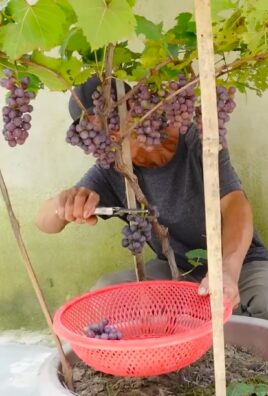
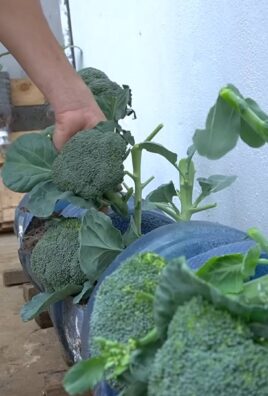
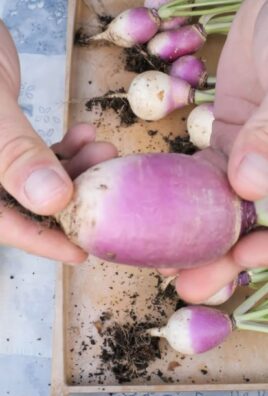
Leave a Comment